Contents
A sock filter inside the tank does most of the heavy lifting, but the smaller stuff still gets through. Dirt or chunks of debris from the tanker, the in-ground tank at the pump, and the filler neck all clog up the fuel system.
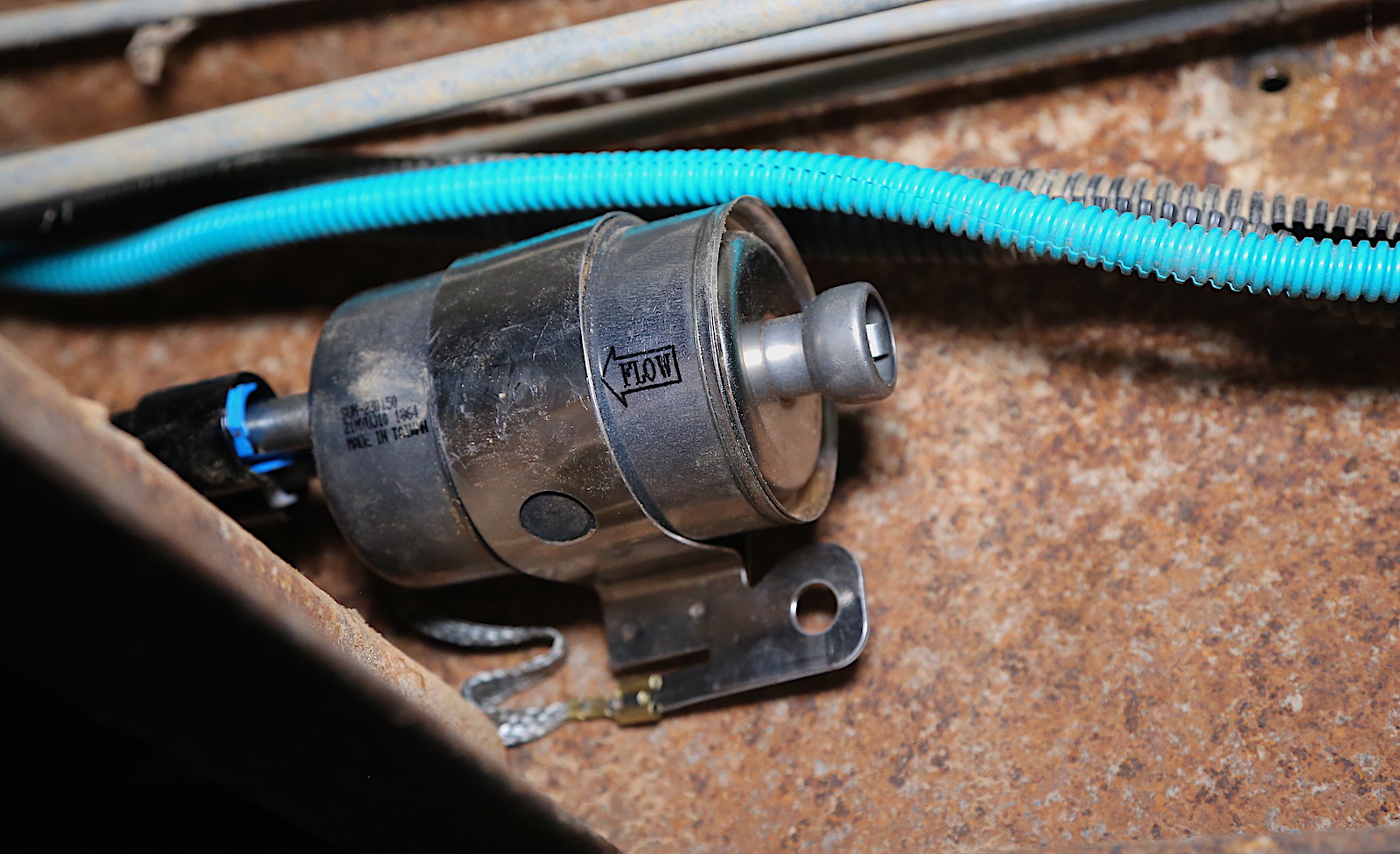
Fuel filters come in different forms, but the most common is the sealed cartridge filter like this one.
Filtration itself depends on the type of fuel system in your vehicle.
- Carbureted engines can pass large contaminants—in the 40-micron range, about half the thickness of a human hair—without clogging.
- Fuel injection systems have much smaller orifices and need better filtration to 100 microns, smaller than the human eye can see.
There are two levels of filtration in any given fuel system: pre-filter and post-filter. This refers to the filter’s position in relation to the fuel pump.
In most modern EFI systems, the pre-filter is the sock in the tank, and the external filter mounts between the fuel tank and the engine. Vehicles with mechanical fuel pumps use a sock filter, sometimes a filter before and after the pump. Pre-filters are typically 10-micron, while most post-filters are in the 100-micron range.
Symptoms of a Clogged Fuel Filter
When your fuel filter is dirty, the necessary fuel might not properly flow to the engine. The filter won’t let dirt and debris through, but it also doesn’t let fuel pass. There are several symptoms of a clogged fuel filter. They’re progressive. You may not notice them initially, but they worsen over a few days or weeks.
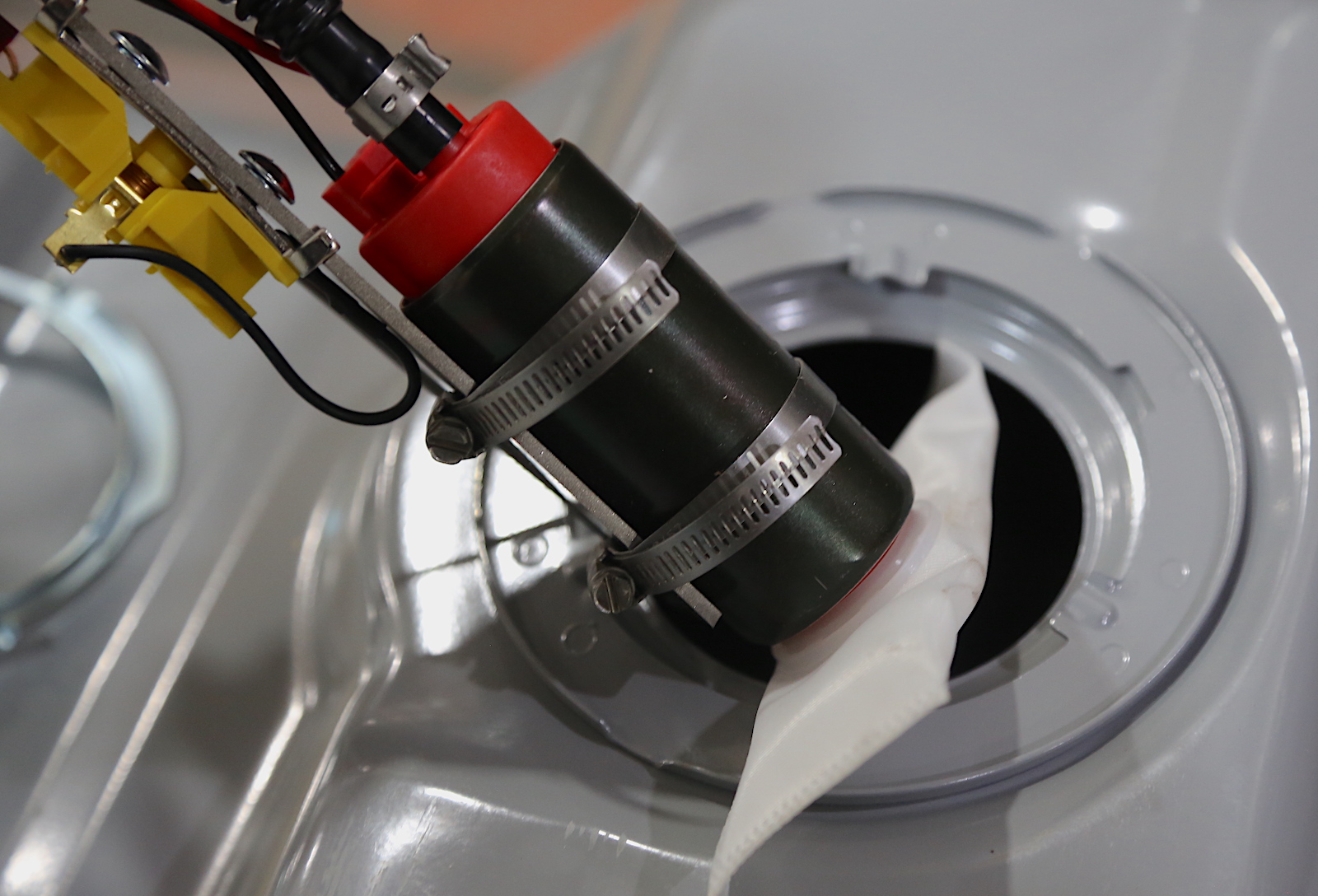
The sock filter in the tank keeps the big stuff from getting pulled in to protect the pump, but you need a fine filter after the pump.
Poor fuel economy – This is one of the first signs you will notice. Your engine is working harder to make the power required to operate the vehicle. If the fuel flow is low, the engine’s computer may make adjustments that drastically reduce the fuel economy to compensate for the lack of fuel. In the end, you actually burn more fuel.
Poor acceleration or hesitation – This can happen at idle, while cruising, or when wide open. If the engine hesitates to make power or stumbles when you goose the throttle pedal, fuel flow is likely lost.
Fuel-filter clock – Some modern vehicles have fuel-filter clocks that let you know when your filter’s life is up. This is used chiefly on diesel vehicles, but some gas engines have them too.
Stalling – Should the engine stall at any speed, especially if it acted up with any of the above symptoms, you could have a dirty fuel filter.
Inconsistent performance – If your engine runs great when you first start it, and after just a few minutes of running, it starts acting up with various symptoms, it could mean the filter needs replacing. Some filter types allow debris to settle to the bottom of the housing so the engine runs, but it clogs up when all the junk gets stirred up.
No-fuel smell – There is a specific smell of an engine running low on fuel. If you have ever run a car out of gas, you likely remember it smelled slightly different. Instead of a typical exhaust smell, you will notice that light, sweet fuel aroma without the heavier, noxious notes. The filter is likely plugged up if you smell it and have plenty of fuel in the tank.
No start – The last symptom is the no-start or hard start, along with the above symptoms. Once the filter is plugged to the point that the engine won’t start, you have no choice but to replace it.
Shop now for fuel filtersHow to Replace a Fuel Filter
The location of the fuel filter varies wildly depending on the manufacturer and model. While most are located under the vehicle along the frame rail or floor pan, some are under the hood or in the trunk.
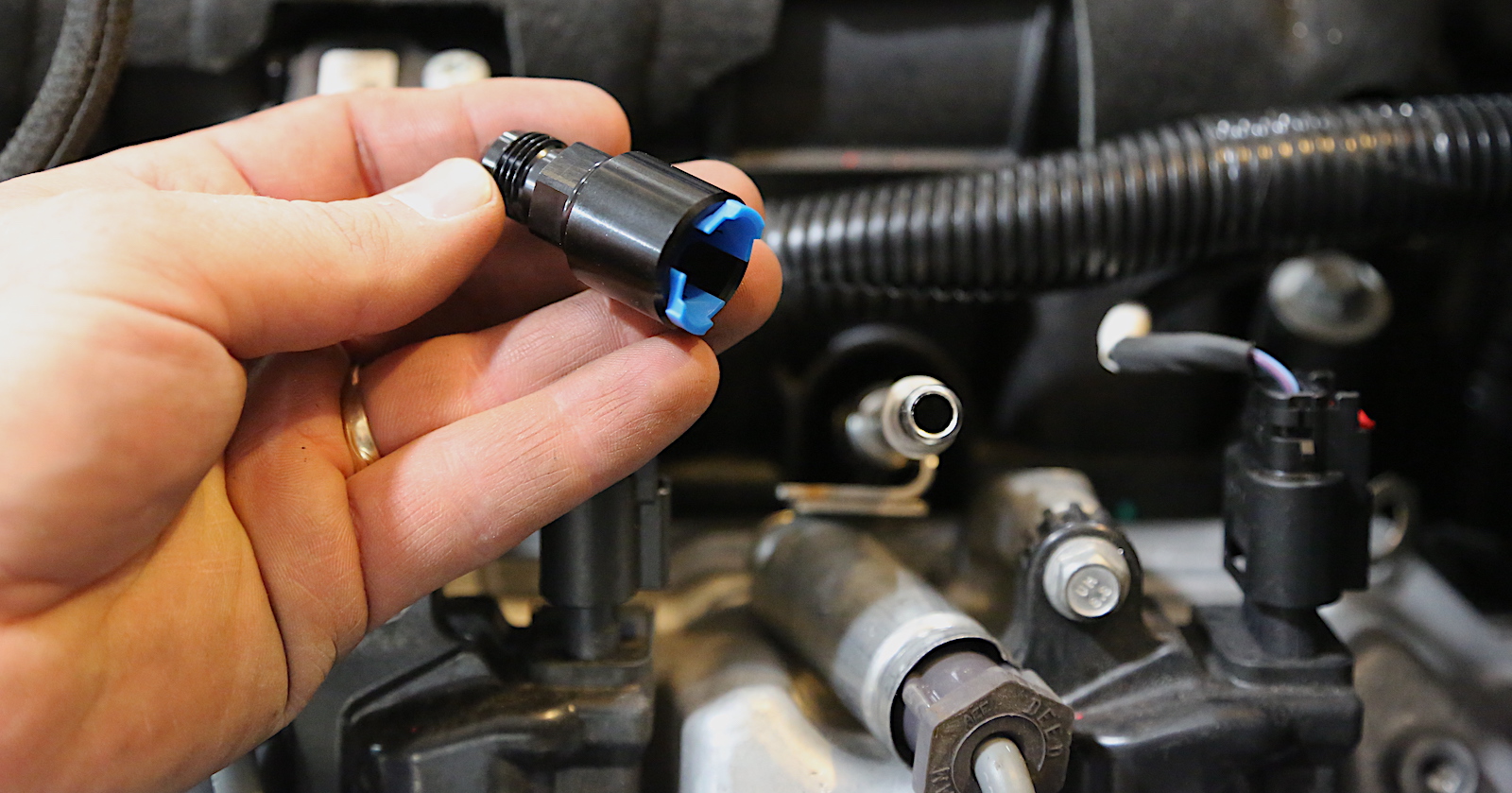
Sometimes, you can squeeze the plastic clip (shown here in blue), but most require a release tool.
Most fuel filters are sealed canister-type with either hose barbs, threaded ends, or quick connects. Some cars use canister-style filters with replaceable cartridges. These are usually mounted under the hood.
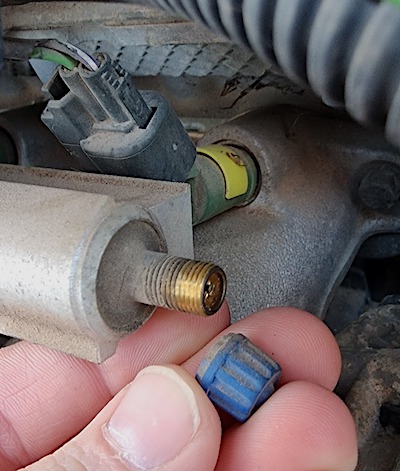
Before removing the fuel filter, you may want to bleed the pressure off the system using the fuel test port on the fuel rail.
Be aware that fuel will come out of the lines during this process, so use gloves and shop towels to keep it off your skin. Gasoline will burn your skin if left on for more than a few minutes and can even leave blisters. Do not let fuel run down your arm. The more sensitive the skin, the faster the gas will start burning.

Most vehicles use push-on quick connect fittings like this.
Step-by-Step
- Locate the filter. It will align with the fuel line from the tank to the engine.
- Ensure you have the correct filter on hand before removing the old one, as fuel will continue to come out while the filter is removed.
- Disconnect the battery negative terminal.
- If the filter is under the vehicle, use a jack to raise the vehicle to a safe height for working and support the vehicle with jack stands.
- EFI engines can have residual fuel pressure in the line that will spray out fuel when you remove the filter. To prevent this, locate the test port on the fuel rail on top of the engine itself. The port has a Schrader valve (the same as a tire air valve). Place a shop towel over the port and depress the pin in the center of the valve. The pressure will be released, along with some fuel.
- If the line from the tank has a flexible line, use a pair of line clamps to close the hose. This will prevent the fuel from spilling out during the process.
- If the filter bolts to the chassis, unbolt it first. This will reduce the time you have the fuel lines open.
- Disconnect the fuel lines from the filter. Carbureted vehicles commonly use hose barbs and worm or spring clamps. Most modern vehicles use quick-connect or threaded fittings. Quick connects can be removed with a fuel line disconnect tool (available individually or as a kit), while wrenches are required for threaded fittings.
- Remove the filter. Immediately replace it with the new filter.
- Reconnect the lines and secure the filter as it was originally mounted.
- Clean up any fuel that spilled, wiping off the chassis and yourself. Wash your hands immediately.
Reset the Clock
Once the filter is replaced, you can start your vehicle. Some cars have fuel filter clocks in the message center. If so, follow the guide in your owner’s manual to reset the clock.
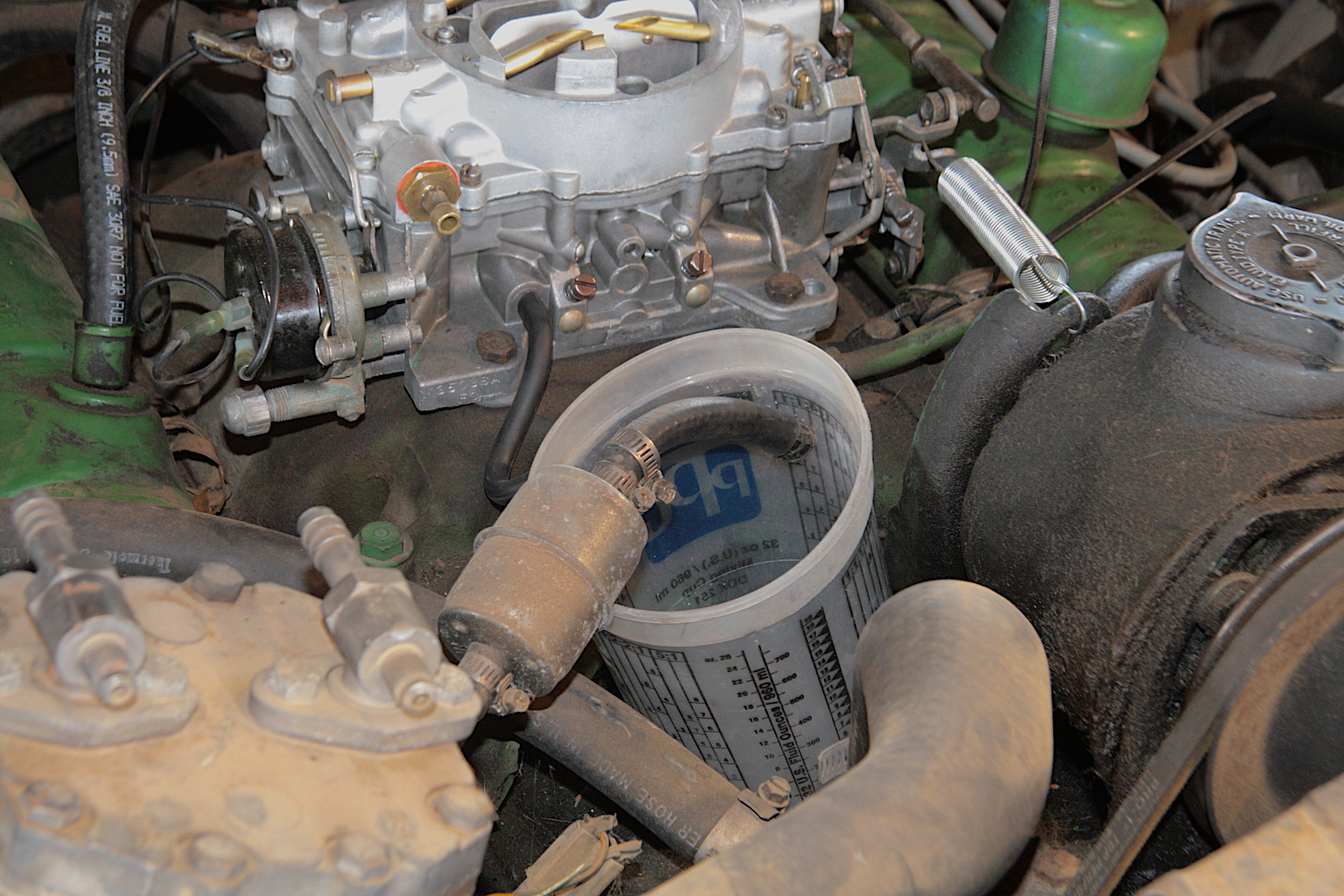
If your engine is carbureted, your filter is likely under the hood between the mechanical pump and the carb. When removing these, it is a good plan to have a cup to drain the fuel into.
Fuel filter mileage ranges widely, from 20,000 to 150,000 miles, though some suggest changing it every 30,000 miles for good measure. If your vehicle has 100,000 miles on it and the original fuel filter, you can bet it is time for a change. Diesel fuel filters are even more critical, as diesel is filthy. Most diesel engines need the filter replaced with every other oil change, which should be every 15,000 miles for a modern diesel engine.
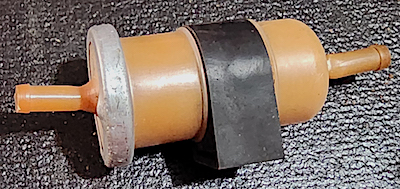
This is a plastic deathtrap filter. Even if your engine has this style on it, replace it with a metal-sealed canister filter. The plastic and glass ones split and leak, leading to fires.
Use a good quality fuel filter, as cheap filters will let more trash through. A good filter costs $6 to $100 (diesel filters are not cheap), and the labor to have a shop do the work runs from $50 to $150 in most cases. On most vehicles, doing the job without a lift takes about 30 minutes from start to finish.
Shop now for fuel filters




